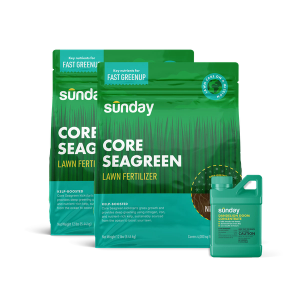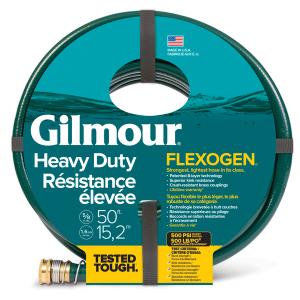What is frost?
Frost is just a thin layer of frozen water, but it can cause big issues for your plants and turf. When the dew point is well above 32°F plants experience condensation. However, when temperatures drop below 32°F, condensation ices over and becomes frost.
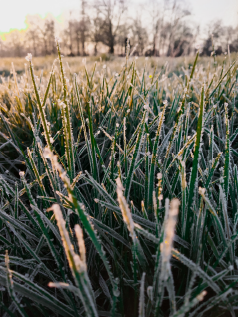
While frost is a very normal part of fall, winter, and even spring, it's crucial to manage frost in your lawn during the changing seasons. By taking a little extra care, you can protect your lawn from frost and give it a leg up for the next growing season.
When does frost occur?
Frost is common from fall through spring, especially on calm, clear days and nights when the weather and wind don’t disturb condensation on surfaces and plants. Remember that frost can still occur even when predicted temperatures are above freezing.
Where does frost occur?
Unless you live in places like Hawaii, Puerto Rico, or the very Southern parts of Florida, you'll likely experience a frost at some point, and you may experience it inconsistently. This is because some areas of your yard are more exposed to the elements than others, making them more susceptible to damage.
Sunday Tip:
You may notice less frost under areas like trees, shrubs, and building overhangs because these canopies trap heat radiating from the soil. Areas that are open or low-lying are more susceptible to frost.
How frost harms plants in your yard
The trouble with frost is that it can freeze your plants and grass from the inside out. As cells freeze, they become brittle, and any impact on that frozen plant can cause cracking and breaking.
How to manage frost in your lawn
In lawns, you can manage for frost after it sets in. One of the best ways to manage frost is to simply reduce the traffic on your lawn. Walking across your frost-covered yard can break open the frozen cells inside your turf grass, potentially causing lasting damage.
One clear sign of damage is lasting footprints or compressed, damaged grass after the frost lifts—you want your grass to stand strong and tall!
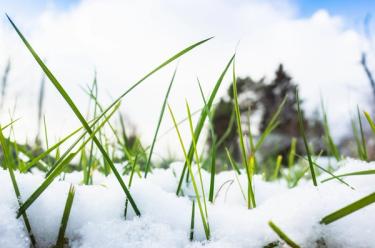
For warm-season grasses, frost damage can leave a swirled or psychedelic-looking print. As grass goes fully dormant this pattern will disappear. But it can happen again in spring as the turfgrass comes out of dormancy, especially if a late frost occurs.
How to manage frost in your garden
For gardens, planning is key. If frost is on the horizon, follow these easy steps to prepare your garden and plants for the freeze and ensure they’ll bounce back and be ready to grow after the thaw.
- Harvest ripe produce: Produce won’t endure a freeze well, so be sure to pick ripe produce before the frost.
- Move portable plants inside: Move lightweight plants and planters into a garage or porch to protect them from the cold.
- Cover any immovable plants: Be sure to use a breathable fabric to cover plants, and remove covers once temperatures rise.
- Irrigate: Water can hold heat, so watering before a frost is a great way to protect your plants, and watering after can help thaw soil.
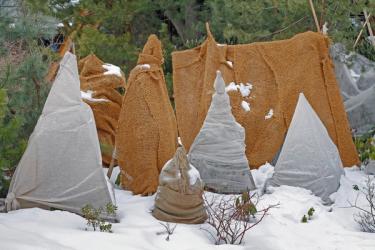
How to recover from frost
Patience is key in recovery.
Recover your lawn from frost
Start the season by mowing as high as you can, then gradually lower your mower blade to the correct height as the patterns subside. This will give your turfgrass a chance to recover and build resilience.
Recover your landscape plants from frost
Unwrap your plants and return them outdoors once the cold has subsided. Then allow your plants to reacclimate to temperatures outside. Most plants suited to your hardiness zone will recover on their own. However, if you have major damage to trees, seek a professional service for expert evaluation.
Cited sources
Frost and freezing temperatures and ways to protect plants. Michigan State University Extension.
Protecting Your Garden from Frost. Oregon State University Extension Service.
What is the difference between a frost and a freeze? Michigan State University Extension.
Winter Plant Protection - UF/IFAS Extension. University of Florida Institute of Food and Agricultural Sciences.











